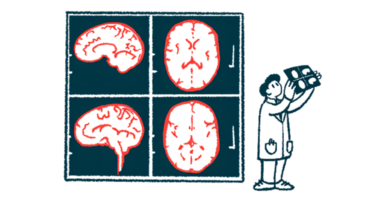2 nonprofits team up with focus on care for atypical parkinsonism
New program aims to educate healthcare workers, help diagnoses

The Parkinson’s Foundation and CurePSP have partnered on a new, multi-part educational program for healthcare professionals that’s aimed at helping frontline workers better understand atypical parkinsonism. Its overarching goals are improved diagnosis and care.
The Atypical Parkinsonism Program focuses on three disease types: progressive supranuclear palsy (PSP), corticobasal degeneration (CBD) and multiple system atrophy (MSA). PSP, CBD, and MSA are estimated to affect fewer than 60,000 U.S. residents, compared with the more than 1 million people in the country thought to have Parkinson’s disease.
The program opens with an accredited three-part podcast series on the three neurodegenerative syndromes and will next year include an online course and in-person advanced training. It targets doctors and nurses, as well as physician assistants, social workers, psychologists, physical therapists, occupational therapists, and speech language pathologists.
“As a leader in professional medical education in the Parkinson’s space, our partnership with CurePSP allows us to expand our efforts to an area with more limited training opportunities and resources,” Elizabeth Pollard, vice president and chief training and education officer for the Parkinson’s Foundation, said in a press release.
“We want to help physicians, nurses, rehabilitation therapists, social workers and other healthcare professionals to better understand distinct needs and care considerations with atypical parkinsonism,” Pollard said.
Parkinson’s Foundation, CurePSP partner for Atypical Parkinsonism Program
These three syndromes, to date, have no available disease-modifying treatments. Moreover, their symptoms often progress quickly, particularly as compared with Parkinson’s.
Such symptoms can include balance problems, socially isolating communication changes, autonomic dysfunction, and vision and swallowing difficulties. Autonomic dysfunction means problems with the body’s unconscious regulatory systems, such as heart rate, breathing, and digestion.
While atypical parkinsonism generally manifests as tremors and muscle stiffness — symptoms that also commonly affect those with Parkinson’s — it has causes different than Parkinson’s disease. However, due to similarities in early symptoms, and importantly, less awareness among healthcare professionals about these disorders, a diagnosis of atypical parkinsonism is often delayed.
On average, it takes 2.5 years for a PSP, CBD, or MSA diagnosis, and more than half of patients are initially diagnosed with Parkinson’s. According to the foundation, only about one-quarter of those with one of the three atypical disorders are accurately diagnosed.
“When given a diagnosis of PSP, CBD or MSA, patients and families face a loss of the specialized clinical care and resources widely available to the [Parkinson’s disease] community and, unfortunately, commonly find themselves in the challenging position of educating their healthcare team on their disease,” said Jessica Shurer, CurePSP’s director of clinical affairs and advocacy.
“Serving similar communities and with parallel missions, we are excited to build upon PF’s robust medical education offerings and collaboratively approach the improvement of quality of care and of life of this community,” Shurer said.
When given a diagnosis of PSP, CBD or MSA, patients and families face a loss of the specialized clinical care and resources widely available to the [Parkinson’s disease] community and, unfortunately, commonly find themselves in the challenging position of educating their healthcare team on their disease.
The podcast series episodes are titled “Overview, Diagnosis and Prevalence,” “Treatment and Interdisciplinary Approach to Care,” and the “Unique Care Needs of PSP, CBD and MSA and Helpful Resources.”
By the series’ end, healthcare professionals are expected to be able to identify common early symptoms of progressive supranuclear palsy, corticobasal degeneration, and multiple system atrophy. Participants also should be able to explain the overlaps and differences between the general progression and diagnostic process of atypical parkinsonian disorders and Parkinson’s.
Attendees also will learn how to apply interprofessional approaches to symptom management for PSP, CBD, and MSA, and incorporate the healthcare team in the assessment of patient needs and in crafting care plans.
Finally, participants also are expected to be able to recognize the distinct challenges of living with one of the three atypical parkinsonian syndromes and be able to cite resources that support patients and their families.







